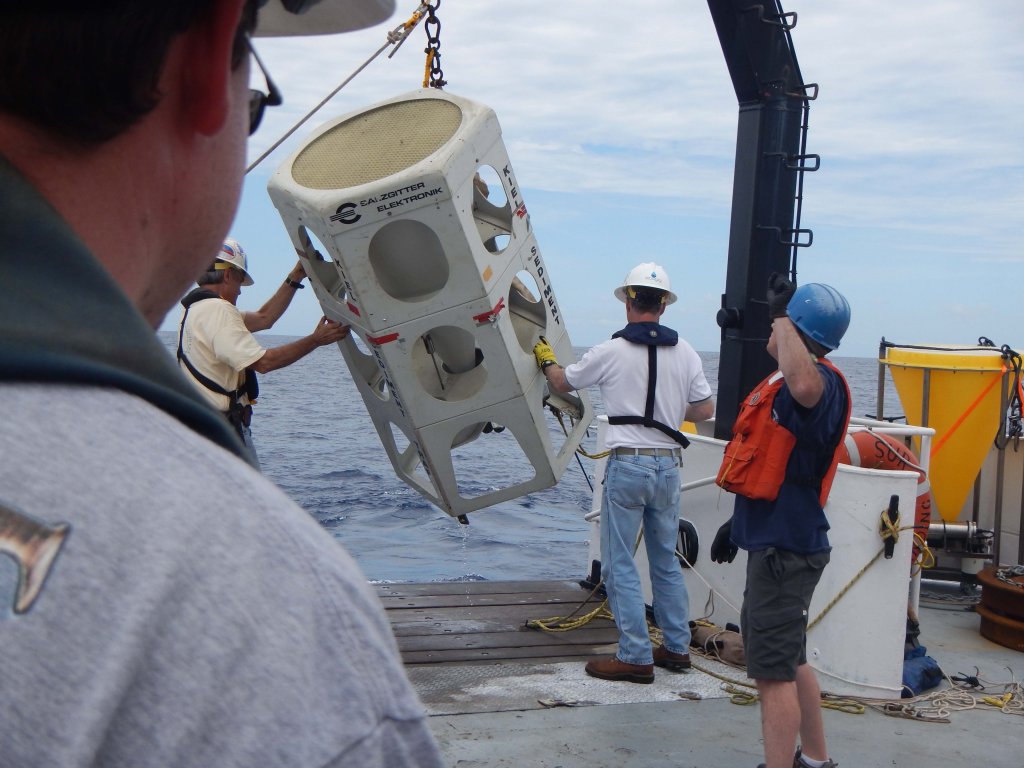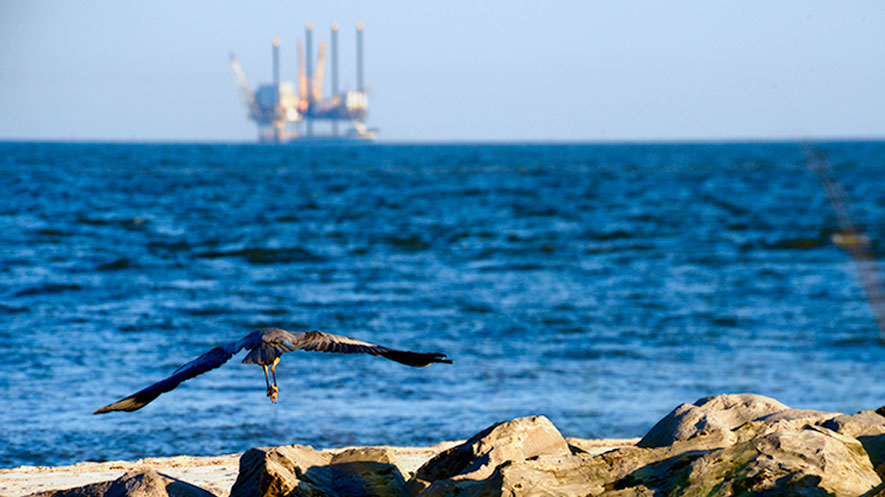Researchers assessed several years of sediment trap collections at three sites - near the Deepwater Horizon site, an active natural seep site, and a reference site - to understand transport pathways and drivers of sinking particles in deep water environments (1400 m depth).
Complex interactions between waters with different nutrient and trophic states and variable currents affect the behavior and composition of marine particle aggregates. Baseline knowledge about how these variations affect particle transport at depth is very limited. The need for a better understanding of these processes became apparent during and after Deepwater Horizon, when an unanticipated and significant transport of oil occurred through sinking marine oil snow. Researchers in this study improved our understanding of particle flux by analyzing samples from year-long-deployed traps (2012 – 2016) for composition, hydrocarbon concentrations, primary production and discharge of nutrients, and seasonal variations.
“As photosynthesis happens only in the surface ocean where there is light, all animals and bacteria living in the deep, dark ocean need to feed directly or indirectly on sinking particles. Thus, it is important to know what type of particles (fecal pellets, algae, eggs, carapaces, molts) and how many are sinking to understand food supply, which determines productivity and diversity, to the deep ocean,” explained study author Uta Passow Passow. “Collecting particles in the traps over a year or more gives us an idea of the seasonality and changes in seasonality between years. Understanding the mechanisms that drive sedimentation and the effects of seasonality is important for fishery planning, monitoring changes, and developing response and mediating measures.”
 Sedimentation rates at the three sites were markedly different in composition and quantity, resulting from varied degrees of Mississippi River discharges, seepage material and amounts, and oceanic influences (winds, large eddies, Loop Current). The total flux at all sites consisted mainly of lithogenic material likely from the Mississippi River plume. The area around the spill site showed seasonal flux patterns likely driven by nitrogen from the Mississippi River.
Sedimentation rates at the three sites were markedly different in composition and quantity, resulting from varied degrees of Mississippi River discharges, seepage material and amounts, and oceanic influences (winds, large eddies, Loop Current). The total flux at all sites consisted mainly of lithogenic material likely from the Mississippi River plume. The area around the spill site showed seasonal flux patterns likely driven by nitrogen from the Mississippi River.
The spill and natural seep sites saw higher polycyclic aromatic hydrocarbon fluxes than the reference site, and the seep site experienced a lower flux volume from a different origin than the spill site. Oil was incorporated into sediments through marine snow sinking from the surface or at depth and through feces sinking from organisms that ingested oil. The researchers published their findings in Elementa: Science of the Anthropocene: The ecosystem baseline for particle flux in the Northern Gulf of Mexico.
Sediment trap collections reflected seasonal particle production processes from the ocean’s surface. The spill site was the most productive of the three sites, and it experienced a typical winter and summer surface algae bloom driven by Mississippi River nitrogen discharge, which likely clogged the traps during this time period. The magnitude of the September 2010 flux at the spill site was not unusual, but the clear petrocarbon signal in its composition differed from seep and reference sites. There were varied amounts of PAHs depending on location and currents. Sediment trap samples collected after the spill suggest that the higher concentration of PAHs at the spill site compared to the reference site had not recovered to baseline by October 2011.
“The signal stemming from the Deepwater Horizon oil spill took 2 – 3 years before it was not visible anymore with our methods, a recovery period much longer than anticipated,” said Passow. “A similar but much smaller signal could be observed at the natural seep site, indicating that some of the processes that sedimented oil are the same for natural seeps and oil spill events.”
Compared to river influences, open ocean currents and large-scale circulations were the biggest influencers of natural seep and reference sites, which exhibited no clear seasonality, lower sedimentation rates, and different composition (particles from large and diverse sources) than the spill site. The authors suggest that the relationship between flux and particle production at the seep and reference sites is lateral advection; for example, when the currents transport particles from the more productive onshore regions towards the central Gulf of Mexico during the summer.
By Gulf of Mexico Research Initiative (GoMRI)



